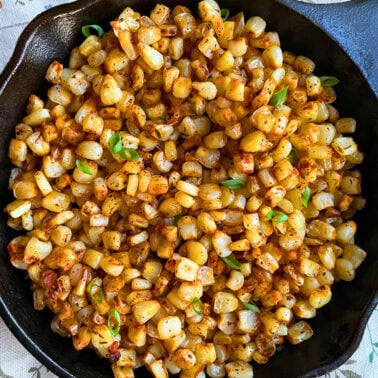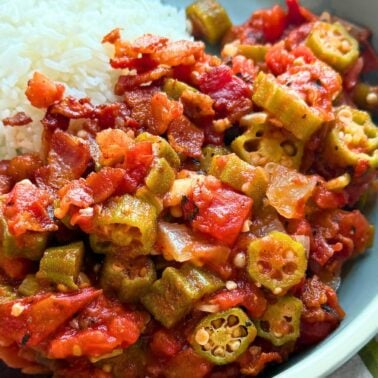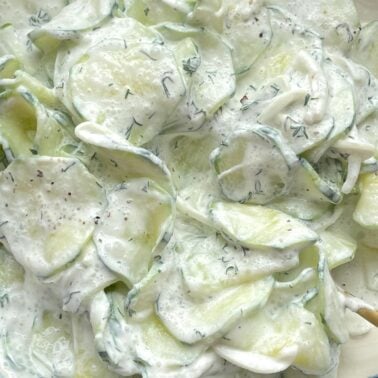Cornmeal is a versatile ingredient derived from ground corn, and it is a staple in many cuisines around the world. Its unique texture and flavor add a delightful touch to dishes like Southern cornbread, fried okra, fried shrimp, fried catfish, fried corn on the cob, sweet skillet cornbread, catfish Atchafalaya, and fried squash.
However, you may find yourself in a situation where you run out of cornmeal or if you need a substitute due to dietary restrictions because of a corn allergy. Here are a variety of alternatives that can be used as cornmeal substitutes, allowing you to continue experimenting in the kitchen and creating delicious meals.
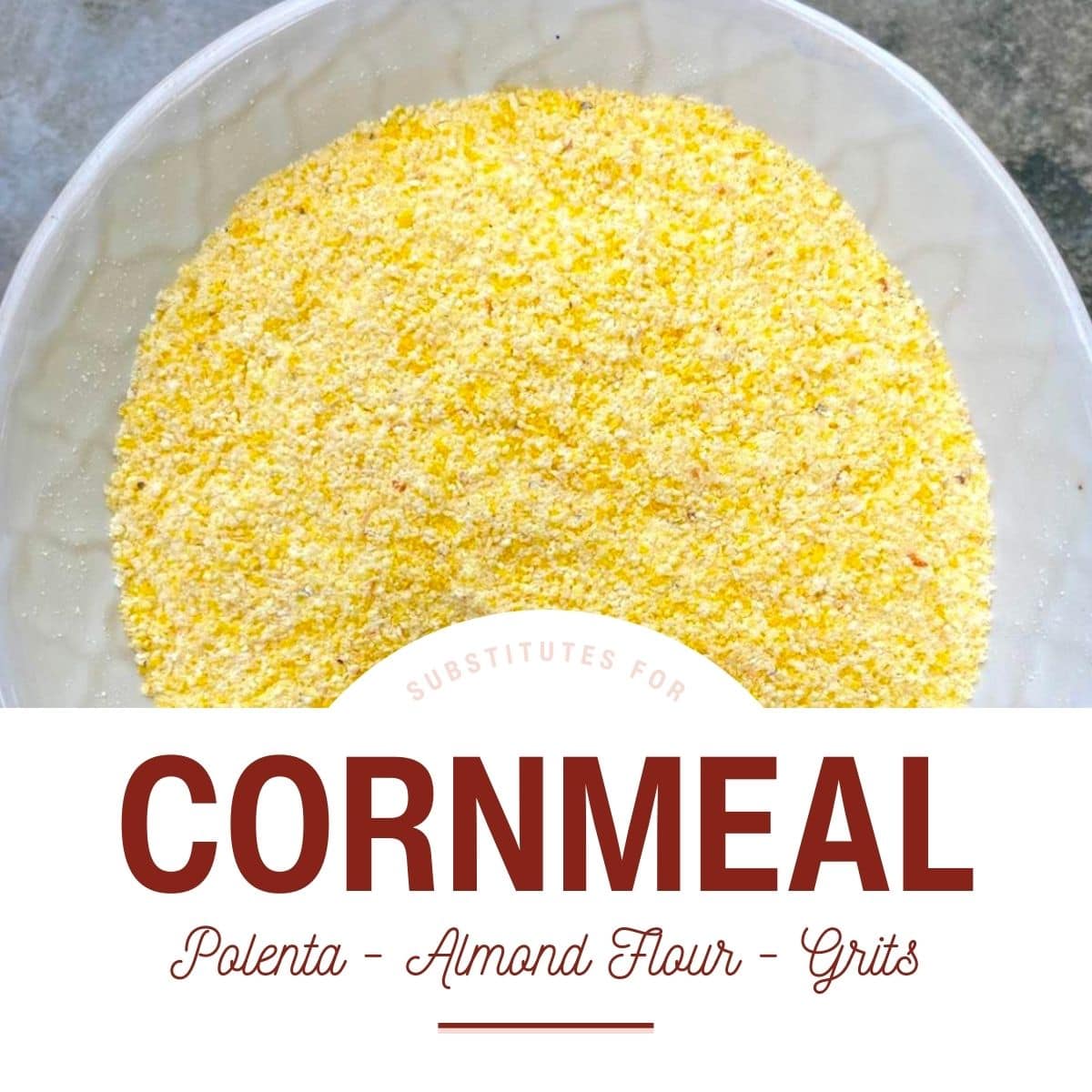
If you don’t have allergies, my first option would be to just make your own homemade cornmeal! You can use corn on the cob cooked in an Instant Pot or frozen bagged whole corn kernels. It takes a little time to make your own cornmeal from scratch, but it keeps for a while and is so delicious and sweet.
Depending on the recipe that you are making, you can make coarse ground cornmeal or a finely ground cornmeal. If you don’t want to make your own, you can use one of the following premade alternatives.
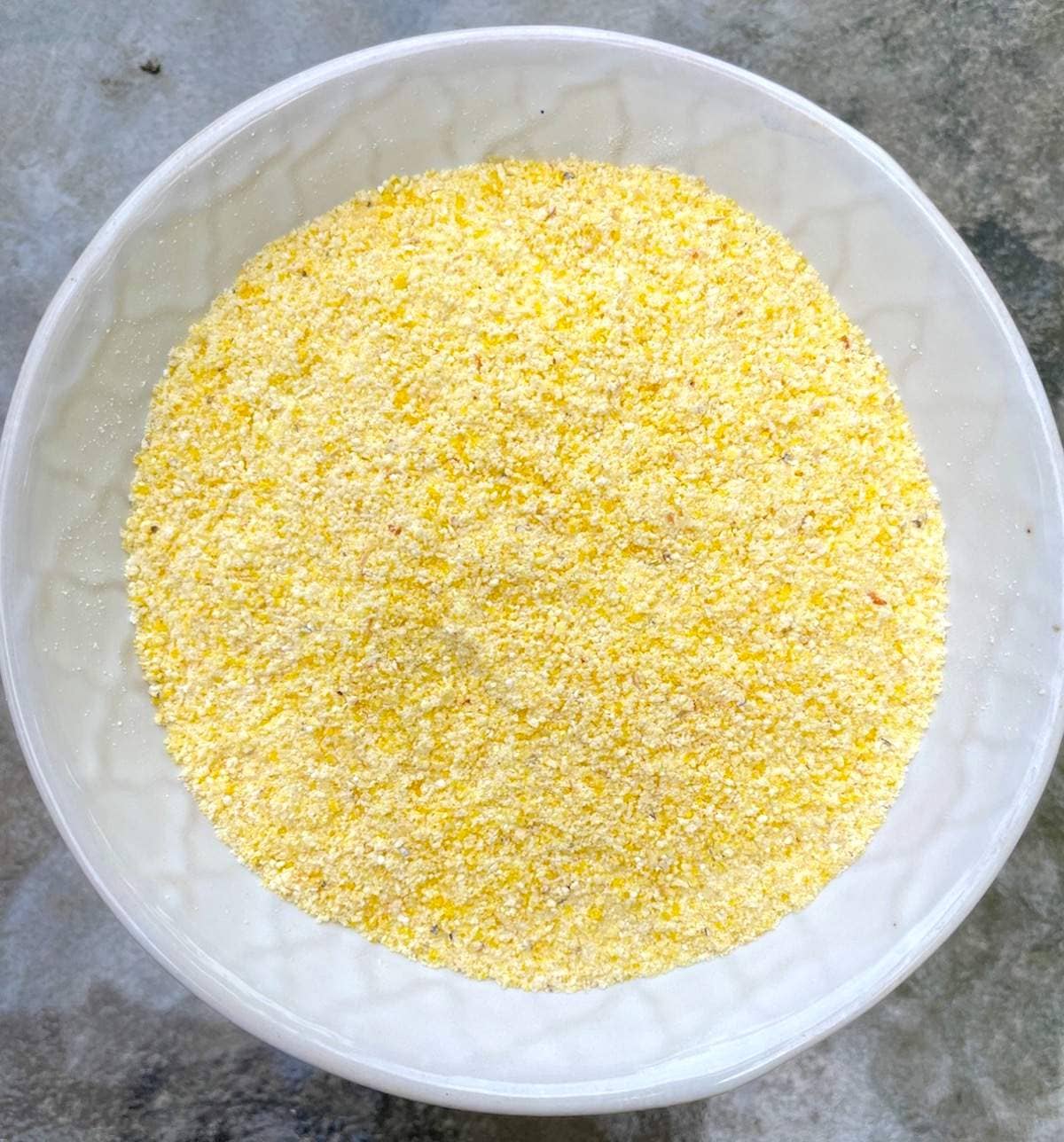
The best choice will depend on what you are making, so for the best results, be sure to choose the most suitable replacement for your needs!
Best Substitutes for Cornmeal
Table of Contents
- Best Substitutes for Cornmeal
- 1. Polenta
- 2. Corn Grits
- 3. Corn Flour
- 4. Breadcrumbs
- 5. Semolina Flour
- 6. Rice Flour
- 7. Masa Harina
- 7. Oat Flour
- 8. Quinoa Flour
- 9. Crushed Chips or Pretzels
- 10. Crushed Cereal
- 11. Coarse Wheat Flour
- Paleo Cornmeal Substitutions
- Almond Flour
- Ground Flaxseed
- 🙋♀️ Frequently Asked Questions
- So What is the Best Cornmeal Substitute?
1. Polenta
If you’re looking for a cornmeal substitute that is almost a perfect substitute, polenta is a great option. Polenta is essentially coarsely ground cornmeal, and while the texture may vary slightly, it can be used interchangeably with cornmeal in most recipes. You may need to adjust the cooking time and liquid quantity as needed to achieve your desired consistency, but it will be a very good substitute for yellow cornmeal.
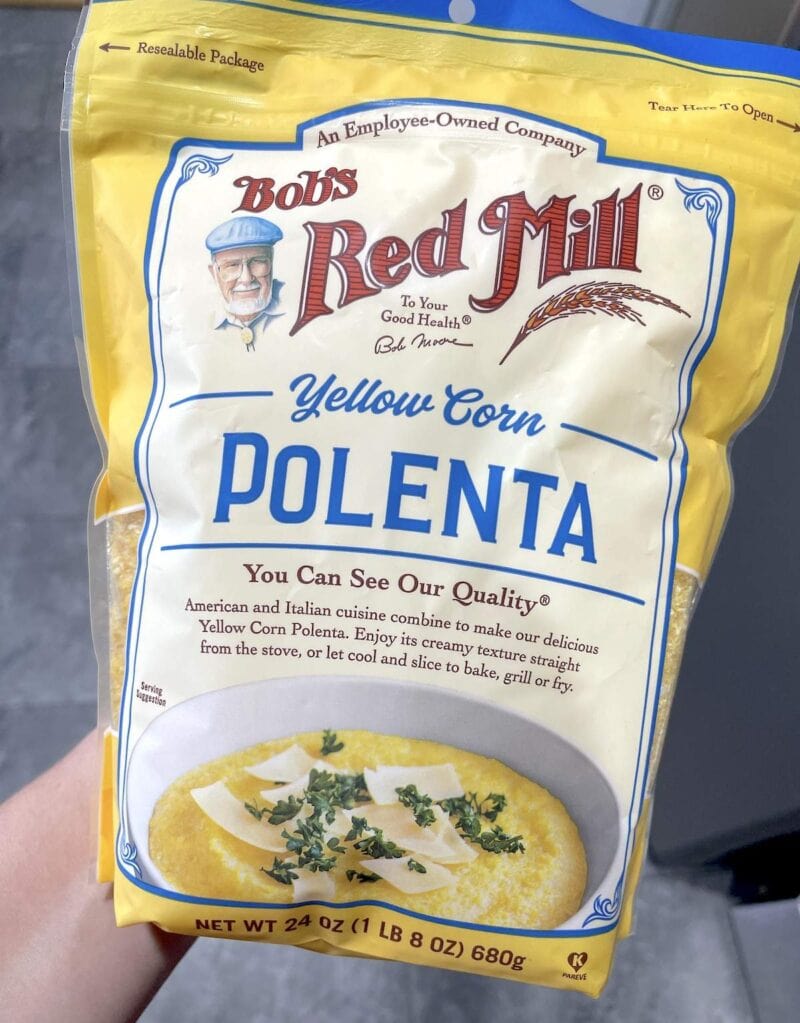
You can also toss some polenta into a food processor or spice grinder and make “polenta flour,” which would be almost as close as you can get to cornmeal. (Do not take it too far, or you will end up with corn flour.) Below, you can see the difference between cornmeal and polenta.
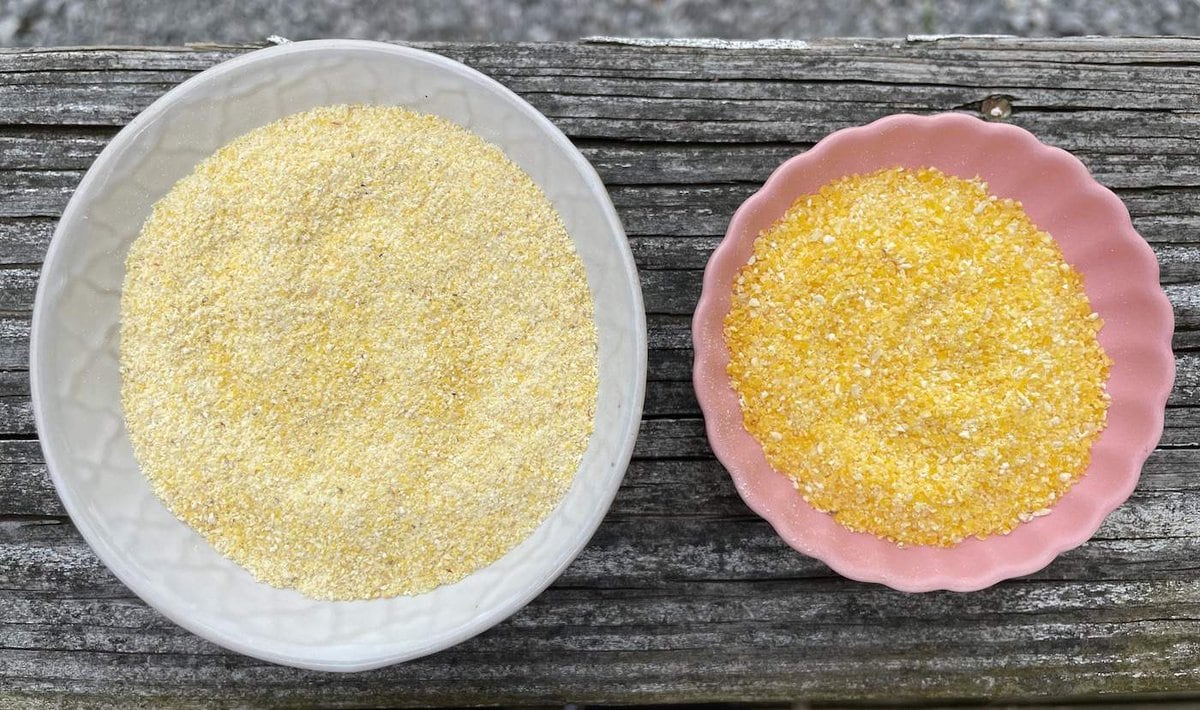
Is polenta the same thing as grits?
Close, but no. Polenta and grits are made from two different types of corn. Polenta is made from flint corn, and grits are made from dent corn. Polenta is often a very vibrant yellow, whereas grits are often white or pale yellow. Polenta tends to hold its texture after being cooked, and grits have a tendency to get mushy. I actually like to use polenta to make grits, so when I make shrimp and grits or cheese grits, I use polenta. I like the texture and the taste better – I don’t like mushy grits.
2. Corn Grits
Corn grits, similar to polenta, are coarsely ground corn kernels. They have a slightly larger particle size, which will mimic the familiar cornmeal crunch and will provide a pleasant texture to your dishes. Grits work well in recipes that call for cornmeal, like cornbread, corn pudding, or as a coating for fried foods. You may need to adjust the cooking time and liquid ratio accordingly. Here are a few ways to use grits as a cornmeal substitute:
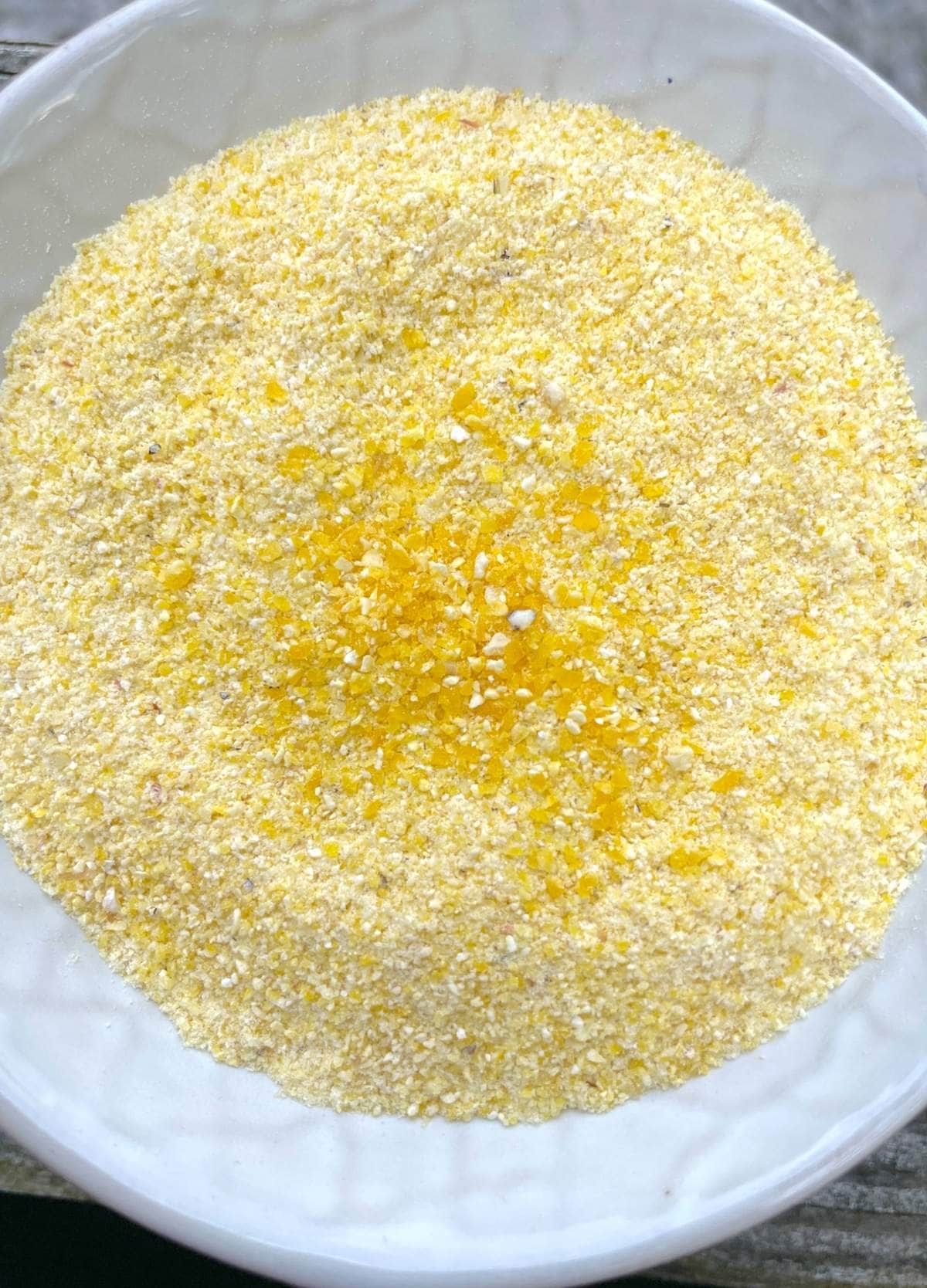
- Cornbread – Instead of using cornmeal, you can use grits to make cornbread. Simply substitute an equal amount of grits for the cornmeal in your favorite cornbread recipe. Keep in mind that the texture may be slightly coarser, but it will still provide a delightful corn flavor and a pleasant crunch.
- Sourdough Bread – Okay, hear me out. This is not a substitution, but cheddar cheese grits in sourdough bread are SO GOOD. Add the grits in place of some of the flour when you are making your sourdough loaf, then fold the cheese into the bread after the first ferment as you begin shaping the loaf. It is heavenly.
- Breading and Coatings – Grits can be a great substitute for cornmeal when it comes to breading and coating fried foods. Whether you’re coating fried chicken, fish, or vegetables, you can use grits in place of cornmeal to give your dishes extra crunch and a unique texture.
- Pancakes and Waffles – Add a twist to your pancake or waffle batter by incorporating grits. Substitute a portion of the flour or cornmeal in your favorite recipe with grits. The grits will lend a pleasant corn flavor and a slightly heartier texture to your breakfast treats. I like to make savory cornmeal waffles, and I add a little cheddar and diced jalapeños to make chicken and cornmeal waffles with some hot honey. It is one of our favorite brunch recipes.
Remember that when substituting grits for cornmeal, the coarser texture of the grits may result in a slightly different outcome. Adjust the cooking times and liquid ratios as needed to achieve the desired texture and consistency in your recipes. Similarly to polenta, you can also pulse the grits in a food processor or spice grinder, but do not take it too far, or you will end up with corn flour.
3. Corn Flour
Depending on what country you are in, this will differ. In the United States, you can buy corn flour to use as a thickening agent. It is essentially cornmeal that got ground up a little too much. It has a different texture when compared to cornmeal, but it can work as a substitute in certain recipes. If you were looking to use cornmeal as a breading to get a nice crunch, I probably would not use it – I would use breadcrumbs instead.
If you wanted a nice corn taste in pancakes or to make a pie crust with cornmeal, this would work well. Since corn flour has a finer texture, use it in smaller quantities, or mix it with other flours to mimic the texture of cornmeal. Keep in mind that corn flour is a good thickener, so it might alter the texture of your dish.
Is cornflour the same thing as cornstarch?
In the United States, corn flour is a yellow powder made from finely ground, dried corn, while cornstarch is a fine, white powder that is made from the starchy inner part of a corn kernel. (In different countries, the names may also differ.) Corn flour can be used similarly to other flours in other countries, which can be confusing. Cornstarch is mainly always used as a thickener or as a breading when frying meat.
4. Breadcrumbs
If you are breading fried chicken tenders, making a fried shrimp po-boy, or making fried fish, breadcrumbs are a great cornmeal replacement. I like to use panko breadcrumbs or seasoned breadcrumbs in a pinch to add crunch to fried foods anyway, so if I don’t have cornmeal, I will add a handful of breadcrumbs to the breading. While the flavor might change, the addition of breadcrumbs is a great way to get that cornmeal crunch.
5. Semolina Flour
Semolina is actually a great substitution for cornmeal in the right circumstances. Made from durum wheat, it is usually used to make pasta or for keeping pizza dough or bread from sticking to a pan. It has the same gritty/sandy texture as cornmeal and can be used to provide that same “crunch” or grittiness to fried things or baked goods.
6. Rice Flour
If you are substituting cornmeal because of corn allergies, rice flour can be an excellent substitute for cornmeal. Rice flour adds a mild, neutral flavor and a smooth texture to your recipes. While it may not impart the distinct corn flavor that you are used to, it can still provide the desired consistency and texture, especially in batters and coatings.
7. Masa Harina
Masa harina is a traditional Mexican flour made from dried corn kernels that have been soaked in limewater, then ground into a fine powder. It is commonly used to make corn tortillas, tamales, and other Mexican dishes. If you’re looking for a cornmeal substitute with a similar flavor and texture, Masa is an excellent option. Here’s how you can use it:
- Corn Tortillas – Masa Harina is the key ingredient in making traditional corn tortillas. Mix the masa with water to form a dough, let it rest, then roll it out and cook the tortillas on a hot griddle or skillet. The result is soft, pliable tortillas that can be used for tacos, enchiladas, or quesadillas.
- Tamales – Masa is commonly used in tamale recipes. The dough is made by combining masa with broth or water, along with other ingredients such as lard or vegetable shortening, salt, and spices. The dough is then spread on corn husks, filled with various fillings, and steamed until cooked through.
- Tamale Pie – Tamale Pie is one of our favorite easy weeknight meals. It is quick to whip up and can be topped with a cornmeal or masa topping.
- Coatings and Batters – Masa can be used as a coating for fried foods or as an ingredient in batters. Its fine texture provides a crispy outer layer when used for coating chicken, fish, or vegetables. It can also be added to batters for fritters or corn fritters, providing that distinct corn flavor.
When using masa as a cornmeal substitute, keep in mind that it has a more pronounced corn flavor and a slightly different texture compared to regular cornmeal. Adjusting the liquid ratios and cooking times may be necessary to achieve the desired results. Masa Harina adds an authentic touch to Mexican and Latin American recipes, allowing you to explore the diverse and delicious world of these cuisines.
7. Oat Flour
Oat flour is made from ground oats and is another versatile substitute for cornmeal. It has a slightly sweet and earthy flavor that complements various recipes. Oat flour can be used in baked goods like muffins, bread, or cookies, providing a moist and tender texture. If you don’t have oat flour on hand, you can make your own by grinding oats up yourself in a high-powered blender, food processor, or a clean coffee bean grinder.
8. Quinoa Flour
For those seeking a nutritious alternative to cornmeal, quinoa flour is a great choice. It is made from finely ground quinoa seeds and has a mild, nutty flavor. Quinoa flour can be used in both sweet and savory recipes, such as pancakes, pizza crusts, or as a thickener in soups and sauces.
9. Crushed Chips or Pretzels
If you have tortilla chips, corn chips, or pretzels on hand, you can crush them up to make a delicious breading for baked or fried chicken or fish.
10. Crushed Cereal
Similarly to corn chips, if you are making a breading for fried or baked chicken, you can crush up cereal to make the breading. Cornflakes (not frosted) make a delicious fried chicken breading. They are also delicious when added to cookies!
11. Coarse Wheat Flour
Coarse wheat flour is a pretty good non-corn substitutes for cornmeal as it will have a similar texture. When replacing cornmeal with wheat flour, replace it by weight instead of by volume. This will give you the most accurate results. Be sure to use COARSE wheat flour to get the correct texture. You will not have the corn flavor of cornmeal with wheat flour though.
Share on Facebook
Share with friendsPaleo Cornmeal Substitutions
Almond Flour
If you’re looking to add a unique twist to your recipes, almond flour can be a creative substitute. While it won’t replicate the taste of cornmeal, almond flour brings a nutty flavor and a slightly denser texture to your dishes that can replicate the texture of cornmeal.
It works well in gluten-free recipes and Paleo recipes, imparting a delightful richness to pancakes, cakes, or cookies. Some of my favorite Paleo cornbread recipes use a mix of almond flour, arrowroot flour, and coconut flour, and they have a surprisingly similar texture and taste to the originals. I love these Paleo jalapeno cornbread muffins. I would just recommend eating them while they are fresh. and
Ground Flaxseed
Ground flaxseed would probably be one of my last choices for a cornmeal substitute, but I would use it in a pinch. If you are avoiding corn for dietary reasons and can’t have nuts, you can use ground flax seeds. The texture will be similar, but the taste won’t be quite right, and it will get gummy when moisture is added.
🙋♀️ Frequently Asked Questions
Is Cornmeal the Same Thing as Corn Flour?
No, cornflour is sometimes confused with cornmeal, but it is actually a more finely ground cornmeal. The flavor is the same, but the texture and uses are different.
Is Cornmeal Different than Cornstarch?
YES. Cornmeal and cornstarch are actually quite different and have very different uses. Corn starch is a white powder (not that white powder) that is made from the endosperm of the corn kernel. The endosperm is the starchy bit that is inside of the hull, or the “outer shell” of the kernel. It is a very fine white and has a pretty delicate texture. It is used to thicken soups and stews and give texture to cookies and baked goods. I would NOT use it as a substitute for cornmeal.
Alternatively, yellow cornmeal is a finely ground type of corn that typically uses the entire kernel. It adds both flavor, texture, and body to a dish – it is excellent for adding crunch to fried fish and shrimp!
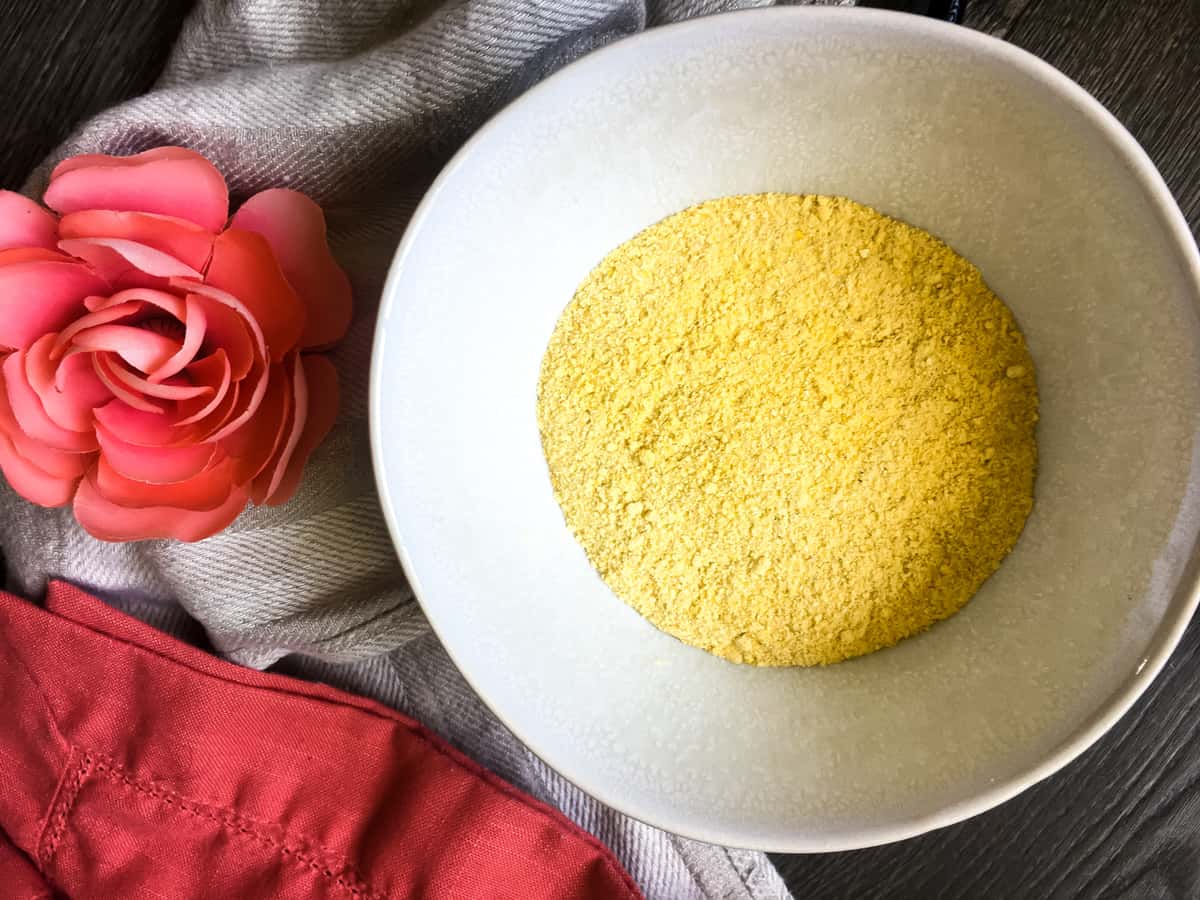
So What is the Best Cornmeal Substitute?
While cornmeal is a wonderful ingredient to have on hand, there are several substitutes available. Be sure to choose the best option based on what you are making. Or, give homemade cornmeal a try. Whether you’re looking for gluten-free options, experimenting with different flavors, or simply using what’s in your pantry, the substitutes mentioned above can help you achieve similar textures and results.

